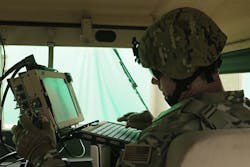Air Force cyber warfare experts eye next generation of cryptographic information security
Officials of the Air Force Cryptologic and Cyber Systems Division at Joint Base San Antonio, Texas, on Wednesday released a request for information (CCSD_BAA_HNCKA_10-0001) asking companies about their most promising technologies applicable to next-generation cryptography.
Air Force information security experts are interested in seven areas: common crypto modularity; commercial solutions for classified key management; trade studies to support space modular common cryptography applications; classified data at rest; common encryption management /crypto indications and warnings; aging cryptographic technologies; and additional cryptographic modernization concepts.
Common crypto modularity focuses on standardized modular families of crypto devices that could integrate easily in several different systems involved in space, air, and land-based applications.
Related: Crypto modernization transforms military communications
Commercial solutions for classified key management focuses on the potential use of commercially developed concepts on future cryptographic and key management, and their influence on communications security.
Trade studies to support space modular common cryptography has to do with information that feeds into the Space Modular Common Cryptography (SMCC) architecture.
Classified data at rest focuses on securing information on hard drives and solid-state drives, as well as on data application files, USB drives, TCP/IP stacks, and encrypted systems files.
Common encryption management/crypto indications and warnings -- also known as CEMENT/CI&W -- seeks to develop technologies to enable one system to manage all network encryption devices remotely on a network.
Related: Air Force seeks modular crypto solutions to save time and money in information security
Aging cryptographic technologies involves follow-on cryptographic solutions for Air Force systems and devices that use relatively old technologies like the Asynchronous Transfer Mode (ATM) protocol, Enhanced FireFly key exchange, and the Triple Data Encryption Standard.
Additional cryptographic modernization concepts involves any remaining innovative cryptographic approaches that could enhance future Air Force operations.
Companies interested have one year to submit their ideas. Email ideas no later than 25 Feb. 2015 to the Air Force at [email protected].
More information is online at https://www.fbo.gov/spg/USAF/AFMC/ESC/CCSD_BAA_HNCKA_10-0001/listing.html.
